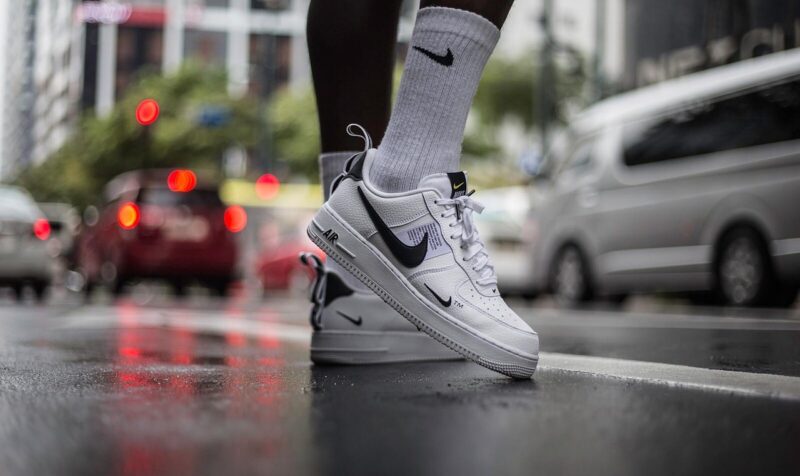The Rise of Nike: How a Small Shoe Company Became a Global Sportswear Icon
November 14, 2024

Nike, Inc. has established itself as not just a leader in sportswear but as a cultural phenomenon that transcends generations. What began as a small operation in a garage has transformed into a global powerhouse that shapes athletic culture and fashion. In this article, we will explore the journey of Nike from its humble beginnings to becoming a juggernaut of creativity, branding, and innovation.
1. The Origins of Nike
The story of Nike begins in 1964 when Phil Knight and his former track coach Bill Bowerman founded Blue Ribbon Sports (BRS) in the United States. They started by importing running shoes from Japan, specifically the Onitsuka Tiger brand (now ASICS). The company quickly gained traction among athletes and running enthusiasts.
However, it wasn’t long before Knight and Bowerman wanted to create their line of footwear, leading to the birth of the Nike brand in 1971. They needed a name that encapsulated speed and victory, and they found inspiration in the Greek goddess of victory, “Nike”.
The iconic Swoosh logo, created by graphic designer Carolyn Davidson, also emerged during this time, symbolizing movement and speed. Little did they know, these early branding decisions would lead to the establishment of one of the most recognizable brands in the world.
2. The Launch of the Nike Brand
In 1971, the first Nike sneakers were produced, and the company quickly gained popularity in the athletic community. The introduction of the Nike Cortez in 1972, worn by athletes during the Olympics, marked a significant milestone. The Cortez’s design was unique, featuring a cushioned sole and a streamlined aesthetic that appealed to runners.
Nike’s approach was different; rather than just marketing shoes as performance gear, they created a lifestyle around them. By focusing on the athlete’s experience and endorsing elite athletes, Nike quickly established itself as a brand synonymous with greatness.
In 1980, Nike became the leading athletic shoe company in the United States, capturing a remarkable 50% of the market share. This success was fueled by innovative marketing campaigns and strategic endorsements that would define the brand’s future.
3. Marketing Mastery and Innovative Strategies
Nike is recognized for its groundbreaking marketing strategies that have captured audiences worldwide. One of the most notable campaigns was the 1988 “Just Do It” slogan, which appealed to both professional athletes and everyday people. It was a message of empowerment, encouraging individuals to push their limits and strive for greatness.
The brand used high-profile endorsements to connect with consumers, including athletes like Michael Jordan, Serena Williams, and LeBron James. In 1984, Nike signed a deal with a young Michael Jordan, leading to the creation of the Air Jordan line. This partnership not only defined NBA culture but established a new category of sneaker culture that appealed to sneakerheads and fashion enthusiasts alike.
The introduction of the Nike Air technology in the Air Max line also revolutionized sneaker design, offering superior cushioning and comfort. Madonna and other music icons featured in Nike’s commercials helped bridge the gap between sports and pop culture, further elevating the brand.
4. Navigating Challenges and Adaptation
Even as Nike thrived, the company faced its share of challenges. Critics targeted Nike’s labor practices and outsourcing strategies, proposing that the company was exploiting workers in developing countries. In response, Nike committed to transparency and sustainability. The introduction of the “Nike Better World” initiative showcased their dedication to ethical practices, including fair labor standards and environmental sustainability in production processes.
The adoption of innovative materials like recycled polyester and sustainable leather marked a significant shift in the company’s approach, aligning with the growing demand for responsible corporate practices. Nike’s ability to adapt gave them the strength to weather storms and emerge more robust and focused on community engagement.
5. The Digital Revolution: Powering Ahead
As technology evolved, so did Nike. The launch of Nike+, an innovative product that integrates fitness tracking technology with wearables, marked a significant pivot to the digital space. Collaborations with tech firms and the launch of their fitness app opened new avenues for engaging customers beyond physical retail spaces.
In 2015, Nike unveiled the Nike Digital Sport portfolio, remaining relevant among fitness enthusiasts and athletes alike. The brand further invested in personalization and customization through initiatives like Nike By You, allowing customers to create unique shoes that reflect their personalities. This level of customization has become a crucial element of Nike’s appeal to a younger audience who value individuality.
6. The Cultural Impact: More Than Just a Brand
Today, Nike is not merely a sportswear brand; it represents a cultural movement. Through collaborations with designers, artists, and cultural icons like Off-White’s Virgil Abloh and rapper Travis Scott, Nike has extended its influence beyond sports into fashion and lifestyle.
Nike’s standing in the cultural arena was further solidified when the company took a stand on social issues. The highly publicized campaign featuring Colin Kaepernick in 2018 received mixed responses but highlighted Nike’s willingness to align its brand with activism. This bold decision showcased their commitment to standing for equity and justice while invigorating the brand’s core values.
7. Looking Forward: Challenges and Opportunities
As Nike looks to the future, it faces new challenges, including intense competition from brands like Adidas and Under Armour. However, Nike’s commitment to innovation, digital transformation, and sustainable practices positions it well for continued success. The sportswear giant is working on further integrating eco-friendly practices while expanding its market reach through partnerships and collaborations.
Nike’s adaptability and pioneering spirit have cultivated a culture that remains relevant to both athletes and fashion-conscious consumers. As the global marketplace changes, one can only speculate how Nike will continue to evolve and inspire future generations.
Conclusion
Nike’s journey from a small shoe company operating out of a garage to a global icon is a testament to the power of vision, innovation, and resilience. The company’s ability to connect with consumers through marketing, design, and advocacy has made it a leader in the world of sportswear and beyond. As Nike continues to strive for excellence, it remains an enduring symbol of aspiration, motivating individuals to pursue their athletic dreams and achieve their potential.
Embracing both its roots and future, Nike will undoubtedly continue to soar to new heights, remaining a household name synonymous with performance and style.
If you are interested in witnessing the evolution of Nike, keep an eye out for their upcoming collections and community initiatives that promise to shape the future of sportswear and athlete empowerment.







